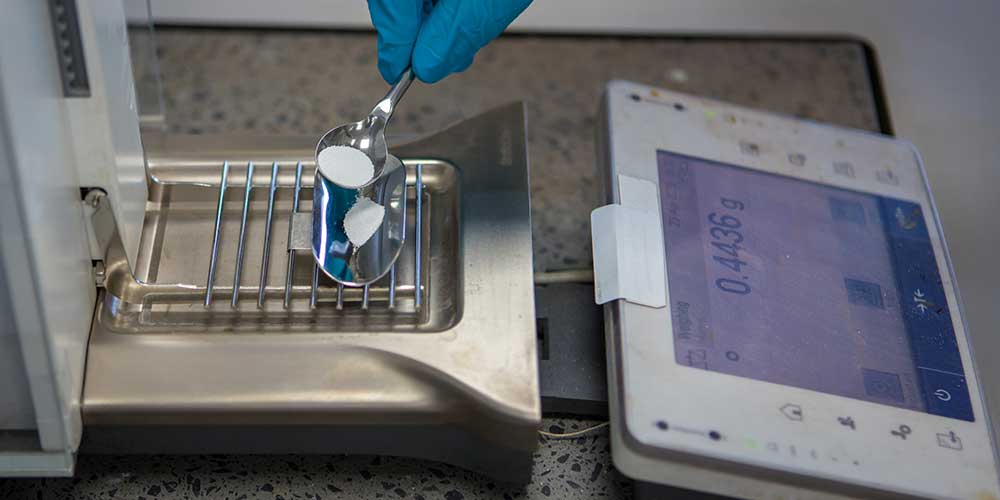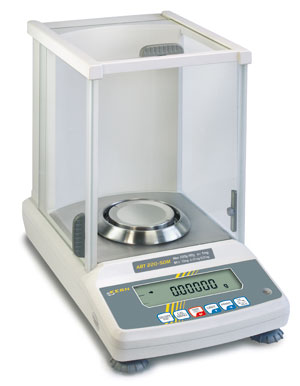
How to Achieve Precision Weighing with an Analytical Balance
What’s the difference between a good experiment and a great one? Often, it comes down to precision. And in the world of scientific measurement, analytical balances reign supreme. But these delicate instruments demand respect to achieve precision weighing. Treat them right, and they’ll unlock a world of accurate data. Treat them wrong, and well… let’s just say you’ll be seeing a lot of questionable results. Here’s your guide to mastering the art of the analytical balance.
Setting Up an Analytical Balance
As Maria sings in “The Sound of Music” let’s start at the very beginning. Setup instructions for Kern analytical balances offered by Tovatech stress the importance of location, which ideally will be permanent.
Before unpacking the precision scale select a firm level surface remote from extreme heat, temperature fluctuations, direct sunlight, drafts, high humidity, vapors, dust and vibration. Any or all can have an impact on accuracy.
Then unpack the balance and set it up per the included instructions.
The next step is commissioning. This is a simple step. Connect the analytical balance to a power supply and let it warm up for 4 hours to stabilize the measuring values based on local effects of gravity.
Next you must calibrate the balance to compensate for gravitational effects at its location. Calibration (or recalibration) must be done any time the balance is moved or if there is a significant change in environmental conditions. Directions are provided but see below for more detail on calibration.
Using an Analytical Balance
Precision scales and analytical balances. such as the Kern scales offered by Tovatech, have plastic housings to avoid drafts that can affect weighing accuracy. After samples are placed on the weighing plate and the housing door is closed let the scale to stabilize for approximately 3 seconds before taking a reading. By all means avoid moving or jarring the balance during the weighing operations.
An electrostatic charge can impact accuracy when weighing in milligrams or smaller increments. Specimens must be neutralized by using a discharge ionizer. An example is the Kern AC-Korona, which can be mounted next to the balance or be manually directed toward items being weighed.
Calibrating for Precisions Weighing
As noted above, precision scales and analytical balances must be calibrated prior to initial use. Recalibration is required if the equipment is moved to another location or has been subjected to significant changes in temperature, humidity and other environmental factors.
There are two types of calibration, external and internal, depending on the model of analytical balance you are using.
External calibration is initiated by following programming instructions in the owner’s manual. It is accomplished when a known weight placed on the weighing pan is the same as the displayed weight on the analytical balance LED display panel. If there is a discrepancy the analytical balance will automatically recalibrate itself until the weights agree. These balances should be recalibrated on a periodic basis as scheduled in your company’s operations manual.
Internal calibration can be accomplished two ways, depending on the particular balance. One is an automatic function using an internal motor-driven adjusting weight. An example is found in the Kern ABT where automatic internal calibration occurs under several scenarios such as
- 4 hours after the previous calibration
- When there is a fluctuation in temperature of 0.5oC
- When the balance is switched from standby to weighing mode
- If the balance was disconnected from its power source
The second way is through a manually activated process that is initiated by pushing a button or turning a knob on the scale. This, like the fully automated process, activates the calibration sequence using an internal motorized weight. An example is the Kern EG-NM precision balance.
Discuss these three calibration options with the experts at Tovatech to determine which is the most effective for your precision weighing operations.
Keep the Analytical Balance Clean to Ensure Precision
A clean analytical balance is an accurate analytical balance. Disconnect it from its power supply and remove spilled samples immediately. Use a soft brush or vacuum to remove loose residues. Wipe down surfaces using a cloth dampened with mild soap. Take care that liquid does not penetrate into the device. Dry the unit using a clean cloth.
Contact the Analytical Balance Experts at Tovatech
Analytical balances perform multiple quality control functions in research and industry, and provide vital data in the support of GLP and GMP. Weighing procedures are generally governed by industry or government regulations but weighing practices depend 100% on equipment accuracy. Contact the weighing experts at Tovatech for advice on selecting, operating and maintaining precision analytical balances.

